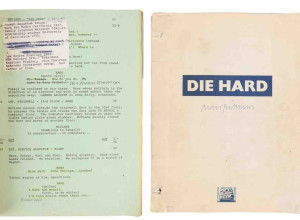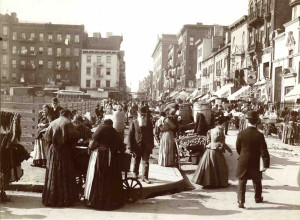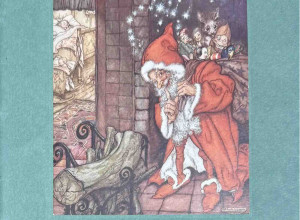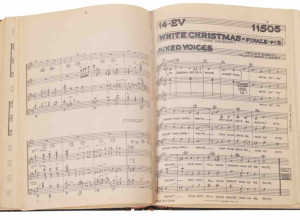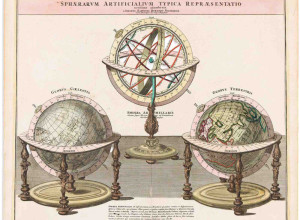Summer Reading: The Bookman's Tale
The more I learn about old books, the harder it is to enjoy the type of biblio-fiction that should appeal to me. I have always enjoyed novels that feature books, particularly antique books and manuscripts, as an essential element, e.g. Byatt's Possession, Eco's The Name of the Rose, Geraldine Brooks' People of the Book, and Martha Cooley's The Archivist, all of which I'm afraid to re-read now that I've spent the last few years focused on the rare book trade as editor of this magazine. I quibble over bibliographical points and still demand a hardy plot, which makes me a more persnickety reader than most.
 Charlie Lovett's debut novel, The Bookman's Tale (Viking, June, $27.95), entices the general reader in me. It opens in a bookshop in Hay-on-Wye where antiquarian bookseller Peter Byerly finds what he believes to be a watercolor portrait of his recently deceased wife, Amanda, tucked into a copy of An Inquiry into the Authenticity of Certain Miscellaneous Papers by Edmond Malone. Oddly, the portrait appears Victorian, so it sends Peter's mind reeling. An intriguing premise, but here we are on page 4, and already I'm doubting Lovett, a book collector and former antiquarian bookseller, because Peter removes the watercolor from the book and slips it into a cheaper book before checking out. What?! A find like that and he doesn't pause to consider whether the book contained more evidence, or the sagacity (not to mention ethics) of separating the book from its extra-illustration? Bad bookseller. And yet, as the story continues, we are meant to think of him as a something of a hapless genius.
Charlie Lovett's debut novel, The Bookman's Tale (Viking, June, $27.95), entices the general reader in me. It opens in a bookshop in Hay-on-Wye where antiquarian bookseller Peter Byerly finds what he believes to be a watercolor portrait of his recently deceased wife, Amanda, tucked into a copy of An Inquiry into the Authenticity of Certain Miscellaneous Papers by Edmond Malone. Oddly, the portrait appears Victorian, so it sends Peter's mind reeling. An intriguing premise, but here we are on page 4, and already I'm doubting Lovett, a book collector and former antiquarian bookseller, because Peter removes the watercolor from the book and slips it into a cheaper book before checking out. What?! A find like that and he doesn't pause to consider whether the book contained more evidence, or the sagacity (not to mention ethics) of separating the book from its extra-illustration? Bad bookseller. And yet, as the story continues, we are meant to think of him as a something of a hapless genius.
Peter's pursuit to find the artist of this little watercolor turns into quite the quest--spanning numerous sets of characters and several centuries. William Shakespeare is one such character; Lovett imagines him annotating a copy of Robert Greene's Pandosto and then handing it off to a bookseller. That becomes the holy grail at the heart of the novel, surrounded by forgery, murder, and sex (the latter recounted from Peter's memories of his college days would have been better left unsaid). And while there were too many set changes for a novel under five hundred pages, what I liked about this story is how Lovett invents such a book's origin and follows it through the centuries from writer to bookseller to collector (Robert Cotton) so on and so forth. I would have preferred more in those chapters and less on Peter's personal history.
As my colleague Jeremy Dibbell pointed out last week, this may be the only novel to feature a Hinman Collator, which is pretty neat. Peter uses it to compare two copies of Pandosto while trying to prove that one is a genuine first edition. The final quarter focuses on forgery, through which Lovett develops narrative tension and delivers an interesting ending.
The Bookman's Tale is a breeze to read, and if you are not yet as jaded a reader as I am vis-a-vis biblio-fiction, it makes fine poolside reading.

 Charlie Lovett's debut novel, The Bookman's Tale (Viking, June, $27.95), entices the general reader in me. It opens in a bookshop in Hay-on-Wye where antiquarian bookseller Peter Byerly finds what he believes to be a watercolor portrait of his recently deceased wife, Amanda, tucked into a copy of An Inquiry into the Authenticity of Certain Miscellaneous Papers by Edmond Malone. Oddly, the portrait appears Victorian, so it sends Peter's mind reeling. An intriguing premise, but here we are on page 4, and already I'm doubting Lovett, a book collector and former antiquarian bookseller, because Peter removes the watercolor from the book and slips it into a cheaper book before checking out. What?! A find like that and he doesn't pause to consider whether the book contained more evidence, or the sagacity (not to mention ethics) of separating the book from its extra-illustration? Bad bookseller. And yet, as the story continues, we are meant to think of him as a something of a hapless genius.
Charlie Lovett's debut novel, The Bookman's Tale (Viking, June, $27.95), entices the general reader in me. It opens in a bookshop in Hay-on-Wye where antiquarian bookseller Peter Byerly finds what he believes to be a watercolor portrait of his recently deceased wife, Amanda, tucked into a copy of An Inquiry into the Authenticity of Certain Miscellaneous Papers by Edmond Malone. Oddly, the portrait appears Victorian, so it sends Peter's mind reeling. An intriguing premise, but here we are on page 4, and already I'm doubting Lovett, a book collector and former antiquarian bookseller, because Peter removes the watercolor from the book and slips it into a cheaper book before checking out. What?! A find like that and he doesn't pause to consider whether the book contained more evidence, or the sagacity (not to mention ethics) of separating the book from its extra-illustration? Bad bookseller. And yet, as the story continues, we are meant to think of him as a something of a hapless genius. Peter's pursuit to find the artist of this little watercolor turns into quite the quest--spanning numerous sets of characters and several centuries. William Shakespeare is one such character; Lovett imagines him annotating a copy of Robert Greene's Pandosto and then handing it off to a bookseller. That becomes the holy grail at the heart of the novel, surrounded by forgery, murder, and sex (the latter recounted from Peter's memories of his college days would have been better left unsaid). And while there were too many set changes for a novel under five hundred pages, what I liked about this story is how Lovett invents such a book's origin and follows it through the centuries from writer to bookseller to collector (Robert Cotton) so on and so forth. I would have preferred more in those chapters and less on Peter's personal history.
As my colleague Jeremy Dibbell pointed out last week, this may be the only novel to feature a Hinman Collator, which is pretty neat. Peter uses it to compare two copies of Pandosto while trying to prove that one is a genuine first edition. The final quarter focuses on forgery, through which Lovett develops narrative tension and delivers an interesting ending.
The Bookman's Tale is a breeze to read, and if you are not yet as jaded a reader as I am vis-a-vis biblio-fiction, it makes fine poolside reading.






